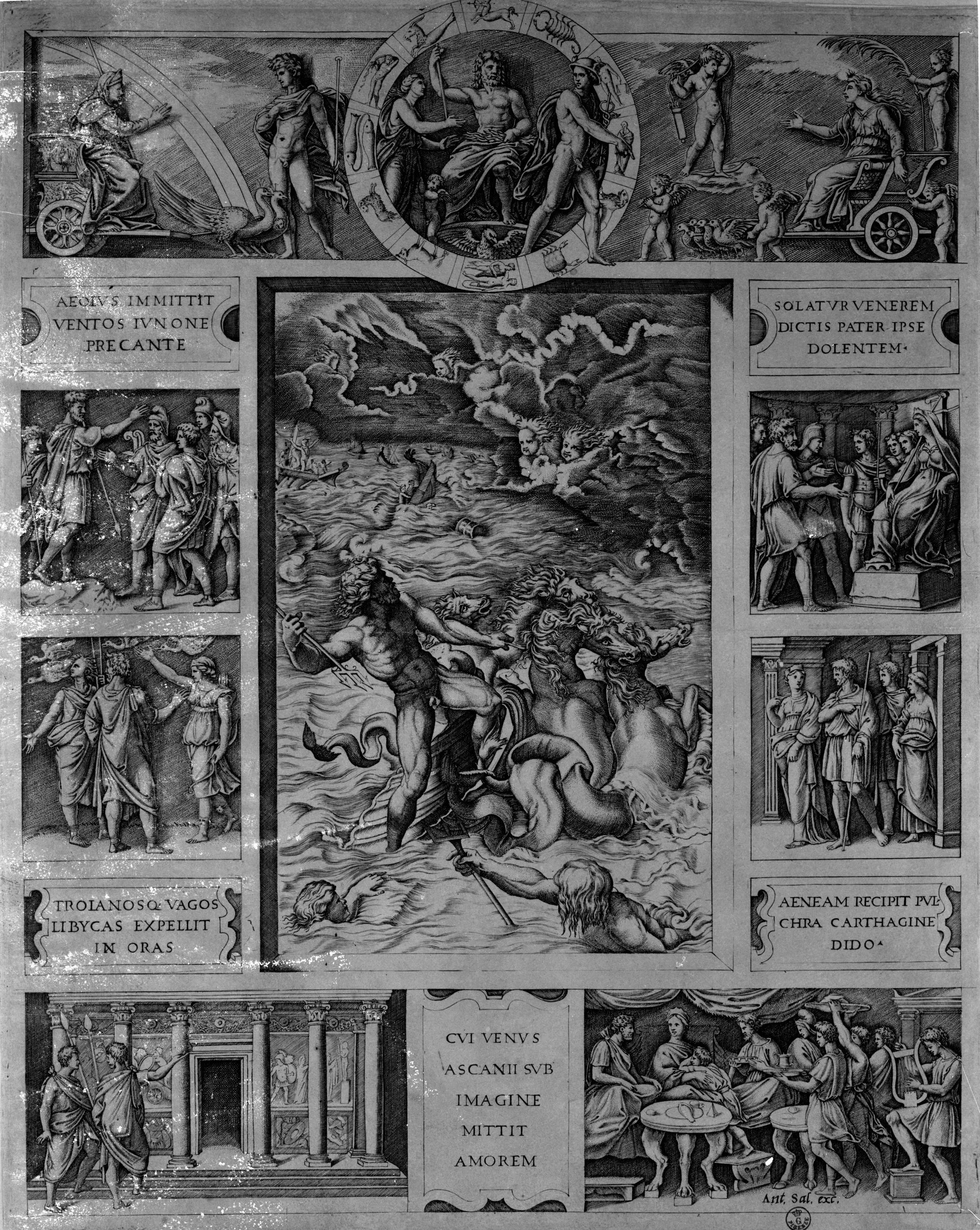Quos Ego!
Marcantonio Raimondi (Argine, Bologna 1480 c. – Bologna 1534), da Raffaello
«AEOLVS IMMITTIT / VENTOS IVNONE PRECANTE // SOLATVR VENEREM / DICTIS PATER IPSE / DOLENTEM // TROIANOSQ[UE] VAGOS / LIBICA ESPELLIT / IN ORAS // AENEAM RECIPIT PVL-/ CHRA CARTHAGINE / DIDO // CVI VENVS / ASCANII SVB IMAGINE / MITTIT AMOREM»
Ambitious in terms of the subject matter and the complex compositional conception in the style of classical relief sculptures, this print is considered among the most important ones of Marcantonio Raimondi’s prolific career and one of his most accomplished examples of “ancient engraving”. In fact, the composition of the scenes is inspired by a relief dating to the first century A.D. known as the “Tabula iliaca”, a tablet illustrating scenes from the Iliad and the Odyssey in a series of small narrative panels arranged around a central scene.
This episode, taken from Virgil's Aeneid, tells of the exiles fleeing from fallen Troy whose journey is disrupted by Juno. Fortunately for the Greeks, the goddess asks Aeolus, god of winds, to unleash a storm upon the Trojan ships. The animated scene in the centre shows Neptune attempting to calm the winds just as he is about to utter the threatening phrase beginning with the words “Quos Ego”, his efforts visible in his expressive poses evoking the Laocoön group, a sculpture group which had recently been discovered in Rome.
